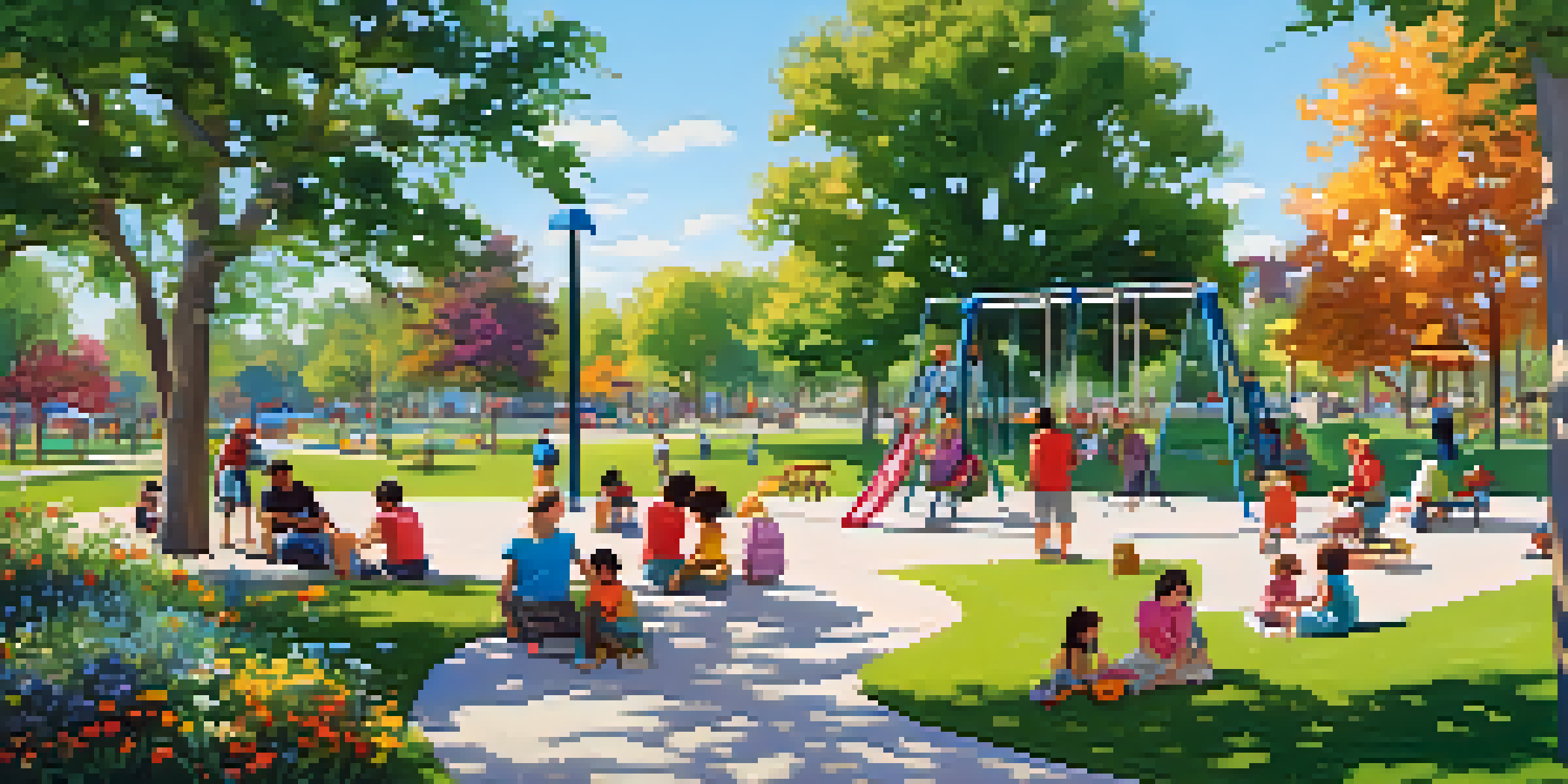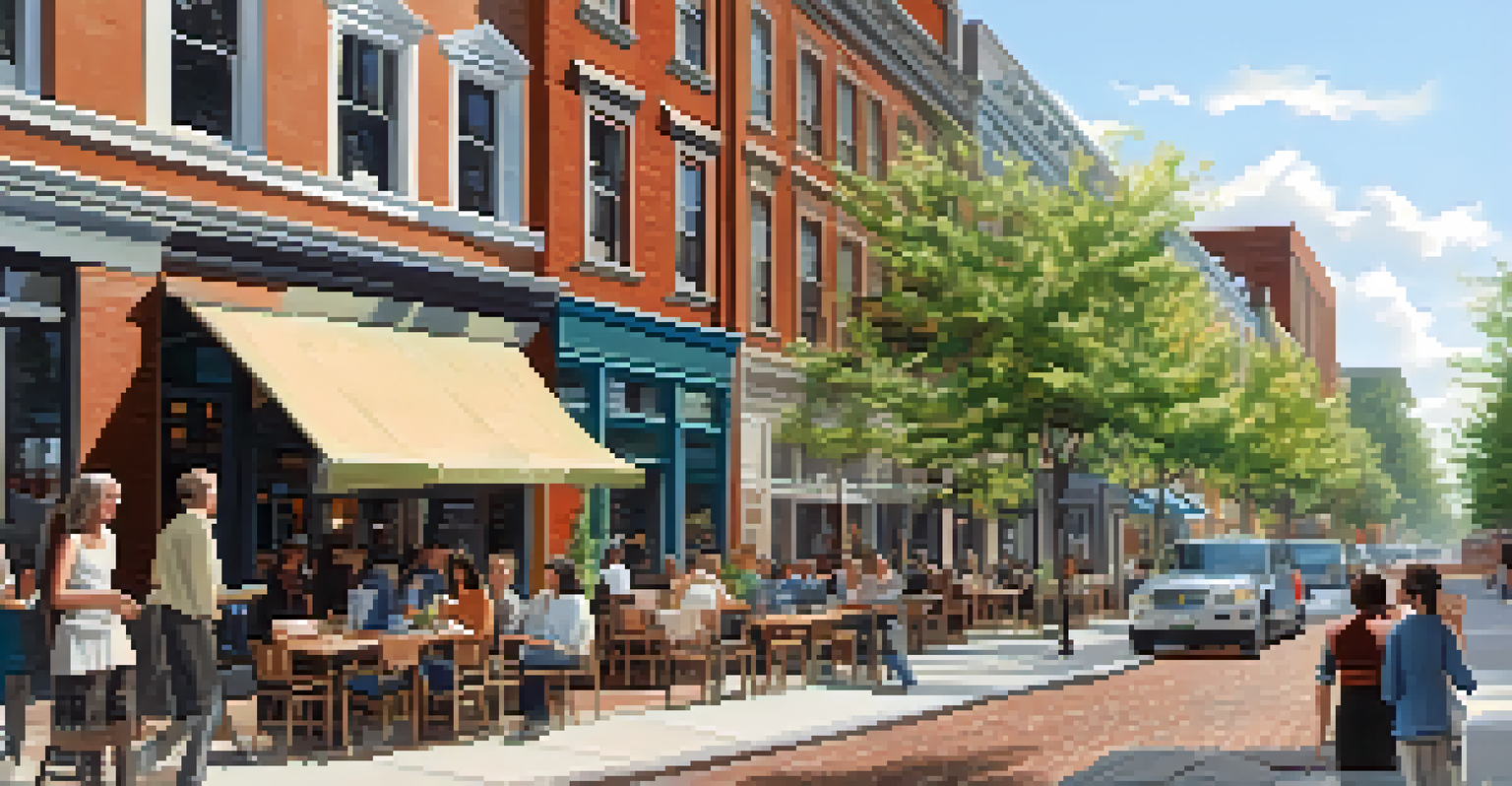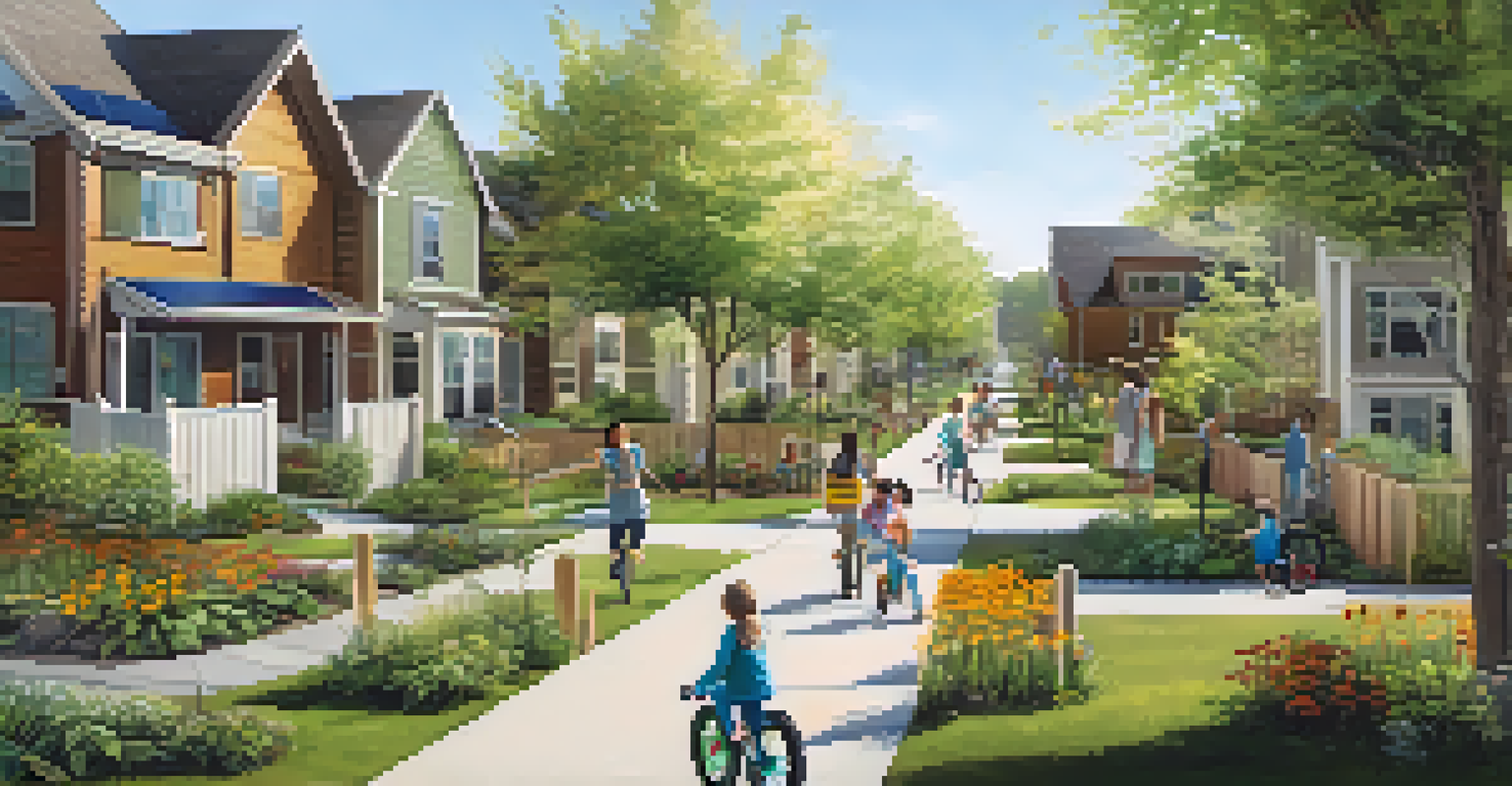The Relationship Between Zoning and Community Development

What is Zoning and Why Does it Matter?
Zoning refers to the laws and regulations that dictate how land can be used in a community. It plays a crucial role in deciding whether an area can be residential, commercial, industrial, or agricultural. Understanding zoning is essential for community members because it affects everything from property values to local resources.
Zoning is not just a bureaucratic detail; it’s a fundamental part of planning a thriving community.
For example, if a community zones a neighborhood for commercial use, it might attract businesses but could also lead to increased traffic. This balance is vital for maintaining the character of a community while allowing for growth. Therefore, zoning is not just a bureaucratic detail; it’s a fundamental part of planning a thriving community.
Communities often engage in zoning discussions to ensure their needs are met. Residents can voice their preferences, and city planners can consider these insights when drafting zoning laws. This collaborative approach can foster a sense of ownership among community members.
The Role of Zoning in Community Growth
Zoning directly influences how a community grows and develops over time. By designating specific areas for different uses, zoning helps manage density and ensures that residential areas remain livable. For instance, zoning laws can prevent heavy industrial operations from being located near homes, thereby protecting residents' quality of life.

Moreover, zoning can encourage the development of parks, schools, and other essential services. When planners zone land for community facilities, they help create spaces that enhance social interaction and promote a healthy lifestyle. This thoughtful planning can lead to vibrant neighborhoods that attract families and businesses alike.
Zoning Shapes Community Development
Zoning laws dictate land use, impacting everything from residential living to commercial growth and community resources.
Additionally, zoning can be adjusted to reflect changing community needs. As populations grow or evolve, local governments can re-evaluate zoning laws to support new developments, ensuring the community adapts while retaining its unique character.
Zoning Laws and Economic Development
Zoning laws significantly impact local economies by controlling where businesses can operate. By creating zones that encourage commercial development, communities can attract new businesses, leading to job creation and increased tax revenue. This economic boost can fund public services like schools and infrastructure, benefiting everyone.
Communities must focus on inclusivity in their zoning processes.
Consider a small town that zones a central area for mixed-use development. This strategy can bring together residential spaces, shops, and restaurants, creating a lively atmosphere that draws visitors. Economic growth in turn can uplift the community’s spirit and reinforce its identity.
However, it’s essential to balance economic interests with community well-being. Communities must engage in discussions about zoning changes to ensure that they serve the greater good, rather than just the interests of a few stakeholders. This participatory approach can lead to more sustainable economic development.
Community Engagement in Zoning Decisions
Community engagement is vital in the zoning decision-making process. When residents participate, they can express their vision for the future, ensuring that zoning reflects the collective needs of the community. This involvement can take the form of public meetings, surveys, or workshops, where community members can share their thoughts.
For example, when a city proposes a new zoning regulation, inviting public input can help identify potential concerns or support. This feedback loop creates transparency and trust between community members and local officials. It also empowers residents to have a say in their environment.
Community Input is Essential
Engaging residents in zoning decisions fosters transparency and ensures that developments reflect the collective needs of the community.
Furthermore, engaging the community in zoning discussions can lead to innovative solutions. Residents often have unique perspectives on their neighborhoods, which can help planners craft zoning laws that enhance livability while promoting growth.
Zoning and Environmental Sustainability
Zoning can play a pivotal role in promoting environmental sustainability within communities. By designating certain areas for green spaces, planners can ensure that residents have access to parks and recreational areas. These spaces not only provide a place for leisure but also help improve air quality and support local wildlife.
Additionally, zoning can encourage sustainable building practices by establishing guidelines for energy-efficient structures. For instance, a community might zone for eco-friendly developments, incentivizing builders to prioritize sustainability. This approach contributes to the overall well-being of the environment and community.
However, it’s essential for communities to consider the long-term effects of zoning on the environment. By incorporating sustainability into zoning laws, communities can promote responsible growth that respects natural resources and fosters a healthier living environment.
Challenges in Zoning and Community Development
While zoning is crucial for community development, it also presents challenges. One major issue is the potential for zoning laws to create inequities. For instance, overly restrictive zoning can limit affordable housing options, making it difficult for low-income families to find suitable homes.
Moreover, zoning changes can sometimes face resistance from community members who fear that new developments may alter the character of their neighborhoods. This pushback can lead to lengthy debates and delays in necessary developments, hindering progress.
Zoning Promotes Sustainability
By designating areas for green spaces and encouraging eco-friendly building practices, zoning can enhance environmental sustainability within communities.
To tackle these challenges, communities must focus on inclusivity in their zoning processes. By addressing concerns and considering the needs of diverse residents, local governments can create zoning laws that promote equitable growth and development.
Future Trends in Zoning and Community Development
As communities evolve, so too do zoning laws and practices. One trend gaining traction is the concept of form-based zoning, which emphasizes the physical form of buildings and their relationship to public spaces. This approach can lead to more aesthetically pleasing and functional urban environments.
Additionally, the rise of remote work has prompted communities to reconsider zoning for residential areas. With more people working from home, there is a growing need for spaces that accommodate home offices or co-working environments. Adjusting zoning regulations to reflect these changes can help support modern lifestyles.

Looking ahead, it's essential for communities to remain adaptable in their zoning practices. By staying attuned to the needs and desires of residents, local governments can create vibrant, sustainable spaces that foster growth and enhance quality of life.